Scholarship
Reflective Practices
TSANG, Shuk Ching Elza
Short Descriptions
Reflection is an integral part of any practices of scholarship but reflection at a workplace is more dynamic than a practitioner's reflection-in-action and reflection-on-action. To bring the optimal pedagogical power of scholarship projects, dynamic reflection between practitioners is important. But how does it happen? What makes it happen? And what is causing resistance?
Possible Benefits
It's hoped that a literature review about reflective modals might help shed lights to the research question. I want to revisit the models of Dewey and Schon, and see what's new in the current literature.
Deliverables
- a literature review - suggestions to the CLE about 'reflective practices & scholarship'
Text Analysis Project
TSANG, Shuk Ching Elza
Short Descriptions
We are a group of teachers who enjoy teaching science communication genres and trust that via doing text analysis we can get to know more about these genres and their stylistic features, use of vocabulary and syntax.
Possible Benefits
There will be positive washback effects to teaching, material writing and gaining credibility from students if we know the science communication genres that we teach well.
Deliverables
-text analysis frameworks -text analysis data - useful findings for writing materials for teaching Lang3024, Lang3025 (& Lang2010, maybe)
Establishing a self-access centre in a secondary school
Miller, Lindsay; Tsang, Shuk Ching Elza; Hopkins, Mark
DOI: 10.1093/elt/ccm029
This paper reports on establishing and running a Self-Access Centre (SAC) in a secondary school in Hong Kong. The impetus for establishing the SAC came from new government curriculum guidelines with a focus on promoting greater autonomy for school students in their English language education. The approach taken in establishing the SAC was to include as many staff as possible in discussions about how to develop autonomy in the school; to ensure teacher development was part of the process of creating the SAC; and to allow students to share in helping to develop, stock, and run the SAC. © The Author 2007. Published by Oxford University Press; all rights reserved.

